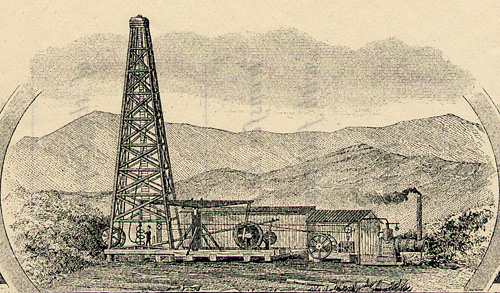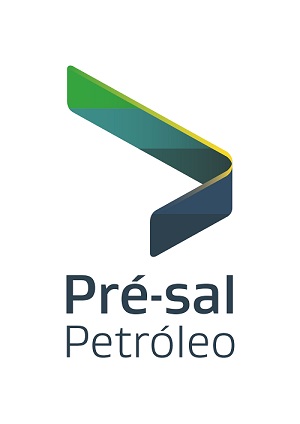Historical Milestones
Oil exploration activity in Brazil dates back to the second half of the 19th century. The oil industry in Brazil has endured distinct development phases, in terms of legislative evolution, each one featured by specific legislative frameworks consolidating a particular exploration and production model, according to each period. One possible chronological segmenting is described below:
1st Phase (until 1934) Institutional Weakness

Colonial Period Manueline Ordinances - Regalian System
A mining regime prevailed in which ownership of subsoil and soil mineral resources is dissociated. Subsoil is owned by the sovereign, who can authorize its exploration by any individual through decrees establishing the rules of such concession.
The Regalian System, of feudal origin, singles out the sovereign's personal interest and prevailed in Brazil from the colonial period until 1891, when the Federal Constitution went into effect. Established in the Manueline Ordinances, it provided that soil and subsoil were of distinct ownership - the latter belonging to the Portuguese Crown, which, in turn, could explore it directly or delegate (grant) its exploration.
Regalian mineral rights are a system of mining rights in which mineral resources underground are separate from the overlying land and are owned by the sovereign, who may authorize exploitation of those minerals by private parties under decrees establishing concession rules.
1824 Imperial Constitution

The Imperial Constitution of 1824 lacked clear rules on mining rights in Brazil. Article 179 (XXVI), which governed rights in inventions and discoveries, seemed to indicate that the constituent assembly had adopted a system providing full ownership of property. However, the prevalent understanding in legal theory remained that ownership of land included surface rights only.
The Imperial Constitution of 1824 can therefore be understood as having introduced a "dominal" system which, unlike the regalian system, confers on the State rather than on the Crown the ownership of mineral resources, the extraction of which must be in the interests of society.
Under Decree 3.352-A of 1864, Emperor D. Pedro II granted "Thomaz Denuy Sargent the right to, either himself or through companies, extract peat, oil and other minerals in the municipalities of Camamú and Ilhéus, in the Province of Bahia, over a term of 90 years." In 1872, Imperial Decree 5.014 granted Luiz Mateus Maylakki coal and oil rights in the Province of São Paulo, in the municipalities of Sorocaba, Itapetininga and Itu. In 1888, Decree 10.073/1888 granted Tito Lívio Martins oil rights in Bofete, in the municipality of Tatuí, São Paulo.
1891 Federal Constitution
Land or Access System (Article 72, § 17, Subparagraph "a") Article 72(17, "a") of the first Constitution of the Brazilian Republic introduced the "accession system" of mining rights in Brazil (with the exception of legal reserves):
"Except
as otherwise provided by law, a mine shall be the property of and
may
be exploited by the owner of the overlying land".
Whoever owns the land also owns the mineral resources and other resources beneath it, unless a legal reserve has been established.
The system was substantially influenced by the US system of mining rights, which privileges private interests in land ownership. The resources held beneath the ground are an accessory to the overlying land, and are equivalent to the fruits of the land in the legal sense of the term. However, the fruits (underground resources) of the land are often more valuable than the land itself.
The accession system was moderated by the Civil Code in 1916, by the Calógeras Act and by the Mining Act.
In 1907, the Brazilian Geological and Mineralogical Service was created by Federal Act 6.323.
The Calógeras Act of 1915 created the first mining regulations in Brazil. It separated ownership of the land from ownership of the resources beneath it, allowing mineral resources to be expropriated separately from the land. The Act covered all "mineral or fossil masses existing beneath or on the surface of the land", including "coal, graphite, lignite and mineral oils".
Decree-Act 4,265/1921 was Brazil''s first Mining Act. It defines mines as "mines proper"... "fossil fuels" and "other substances of high industrial value."
2nd Phase (1934-1953) - Institutional Development

Federal Constitution of 1934
The Federal Constitution of 1934 was influenced by the Mexican Constitution of 1917 and the recognition of oil as a strategic asset for national security following World War I.
Article 118 separates ownership of land from ownership of the mineral resources beneath it:"Ownership of mines and underground wealth and of
waterfalls shall be
separate from ownership of the land for the
purpose of industrial
exploitation or use."
Natural resources are owned, controlled, managed and granted for exploitation by the State.
In the wake of the 1917 Mexican Constitution and after World War I, when oil became a strategic asset for State security.
Unequivocal separation between the ownership of the soil and that of the natural resources found in the subsoil.
Natural resources are in the public domain of the State, which must care for controlling, inspecting and granting their exploration and production.
Legislative Frameworks:
- Decree No. 23,979/1934 - Establishment of the National Department of Mineral Production [DNPM] with merger of the Brazilian Geology and Mineralogy Service into the DNPM structure.
- Decree No. 24,642/1934 - 1st Brazilian Mining Code
- Decree Law no. 395/1938:
- Declares as public utility and regulates the import, export, transportation, distribution and trade of crude oil and its derivatives, as well as the imported oil refining industry in Brazil.
- Nationalizes the domestic and the imported oil refining industry.
- Establishes the National Petroleum Council (Article 4), a specific body for the regulation and inspection of the oil sector, previously under DNPM's scope.
- In 1939, the first commercial oil accumulation in Brazil was discovered by the DNPM in Lobato (a neighborhood in the city of Salvador, Bahia). - Decree-Law No. 3,236/1941 (Oil Code)
- First Statute fully dedicated to the legal regime of oil, natural gas and bituminous rock deposits.
- First monopolistic trends: "Article 27. The Union shall have the right to reserve allegedly oil zones, within which no research or mining authorization shall be granted."
- Definition of the terms "deposit" and "mine"; sorting of the deposits by type, including "solid fossil fuels", "bituminous and pyrobetuminous rocks", and "oil and natural gas".
- Specific chapter for the "oil and natural gas deposits" later added through Decree-Law No. 366/1938.
- Article 97. "Oil and natural gas deposits possibly found within national territory belong to the States or to the Union, as a private, imprescriptible domain, as per the following parameters:".
3rd Phase (until 1953-1995) - Petrobras Monopoly

Law No. 2,004/1953 Petrobras is established
- Establishes Petrobras, outlines the National Petroleum Council [CNP] attributions and establishes monopoly on the following activities: research and mining, refining, sea and pipeline transportation of crude oil and derivatives.
- Union's monopoly on oil industry activities is ensured by the CNP (guidance and inspection body) and Petrobras and its subsidiaries (executive bodies).
- Oil was a highly strategic parameter for the definition of World War II, impacting the discussions on the relevance of the Act establishing the monopoly system and Petrobras, in the wake of the campaign "O Petróleo é Nosso".
- 1976: Service Contracts with Risk Clause
- Presidential determination (Explanatory Memorandum 217/16), Provision of E&P services (exploration and production) by companies or joint ventures to Petrobras. Modest results, both in investment and oil discoveries.
- Contract maintenance: some risk contracts are still in force in Brazil.
· Federal Constitution of 1967 (Art. 162)
Article 162 of the Federal Constitution of 1967 established a monopoly on oil exploration and production.
Federal Constitution of 1967 (Art. 162)
Art. 162 of the Federal Constitution of 1967 raised the monopoly on the research and extraction of oil and natural gas to the level of constitutional mandate.
- 1976: Service Agreements with a Risk Clause
- Presidential determination (Recital 217/16), Provision of E&P services (Exploration and production) by companies or consortia to Petrobras.
- Modest results, both in investments as well as in discoveries.
- Preservation of the contracts: there still exist risk contracts in force in Brazil.
1988 Federal Constitution: absolute state monopoly (Articles 176 and 177)
1988 Federal Constitution: absolute state monopoly (Articles 176 and 177)
- Research, mining, refining, import and export, sea and pipeline transportation are a Union monopoly (non-delegable).
- Outright prohibition on risk contracts (Article 45 of the Transitional Constitutional Provisions Act ensured continuation of activities in the discovered fields).
- Full reception of Law No. 2,004/1953 (Petrobras and CNP, succeeded by the National Fuel Department [DNC], continue in charge of implementing state oil monopoly).
Constitutional Amendment 09/1995

4th Phase (from 1995) - Regulation & Competition

Law No. 9478/1997 Oil Act
- Establishment of the National Council of Energy Policy [CNPE] and the National Agency of Petroleum, Natural Gas and Biofuels [ANP].
- DNC decommissioning.
- Establishment of the Concession Regime: monopoly ensured through the concession of areas (through bidding) to state or private companies, national or foreign, to carry out E&P activities (by delegation).
2005: First pre-salt discovery
- The first well is drilled into the Pre-salt geological environment.
- The well was drilled at the Parati Prospect (Block BM-S-10), but would prove to be noncommercial.
2007: Tupi (now Lula) Discovery
- Petrobras announces a discovery at the Tupi prospect (later renamed Lula), in Block BM-S-11 (Santos Basin), with estimated recoverable reserves of between 5 and 8 billion barrels of oil equivalent.
- A regional assessment of pre-salt potential indicates it is robust and extends across Brazil''s south and southeast offshore sedimentary basins. Lula currently holds the record as the largest oilfield ever discovered in Brazil. In 2018, Brazil''s pre-salt production exceeded post-salt production.
2010: Pre-Salt Regulatory Frameworks

- Law 12,276/2010 - Establishes the Onerous Assignment Scheme.
- Law 12,304/2010 - Authorizes the establishment of Pré-Sal Petróleo S.A. (PPSA)
- Law 12,351/2010 - Establishes the Scheme for Production for Pre-Salt and Strategic Areas and establishes the Social Fund.
2012: Law nº 12,734 / 2010, Royalties

- Establishes the rate of 15% for royalties from the polygon of the pre-salt and strategic areas.
- Amends criteria for the distribution of royalties among federal entities (withholding by the Federal Supreme Court [STF] through Direct Unconstitutionality Actions [ADIs] No. 4,916, 4,917, 4,918 and 4,920/2013).
2013: Pré-Sal Petróleo

- Pré-Sal Petróleo is created and its Bylaws approved under Decree 8.063 (August 1, 2013).
- Act 12.858/2013 (September 9, 2013) allocates 50% of royalties and 50% of Social Fund assets to health care and education. Revenue from Pré-Sal Petróleo''s representation of the Federal Government under Production Unitization Agreements is allocated to education and health care.
2017: MP 811
Marketing of Federal Government equity oil and gas
- This Executive Order authorizes Pré-Sal Petróleo to sell the Federal Government''s equity oil and gas with or without a trading agent.
- The Federal Government concludes its first sale of oil on March 5, 2018 — 500,000 barrels of oil from Mero (Libra).
2018: Law enacted, authorizing direct sale of oil and natural gas from the Union by Pré-Sal Petróleo S.A.
The concessions then granted fully differed from the current ones. Currently denominated "archaic concessions", they were featured by a long or even indeterminate validity, tied to the oil field marketability, by the amplitude of granted areas, by the lack of obligatory exploratory investments and by the single royalties'' payment compensation by the concession holder to the host State or to its sovereign authority.
